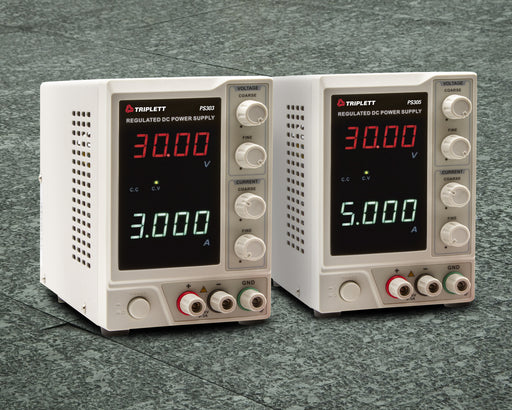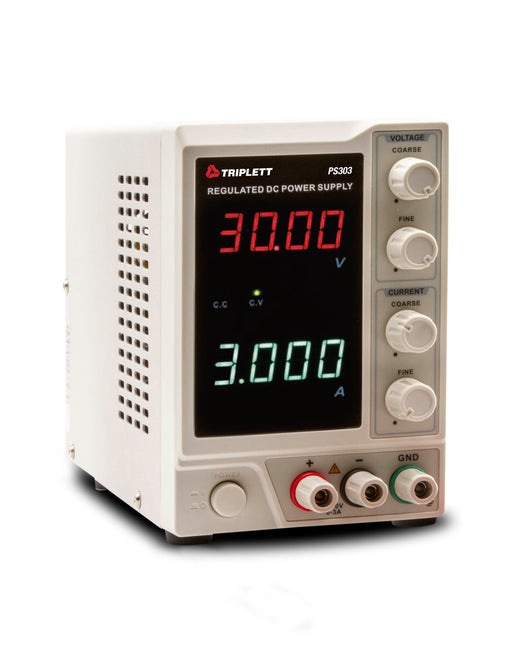Know More About Triplett Power Supplies
What is power supply test equipment?
Power supply test equipment is used to check the power supplying units, circuit boards, and more. These may be basic which are mostly used for home repairs or by students. Some of them are advanced tools used by electricians which can instantly provide them the output. These are widely used for DC power supplies and may be partially or fully automated. They are also used to check UPS related issues, high volume production units, and so on. They have inbuilt measurement tools and software programs. They also have LED displays for readings. Our power testing equipment have advanced protection features from short circuits, noise, reverse polarity, overload, fused temperature, and more. They can also auto repair the circuit and control the temperature. We offer models with Certificate of Traceability to NIST.
What are the two main types of power supply equipment?
There are two types of current flows - direct (DC) and alternating (AC). Similarly, there are two types of power supplies- DC to DC converters and AC to DC converters. These converters, apart from converting AC to DC and DC to DC current, also help cool the device and facilitate ventilation. They offer DC voltage to peripheral devices, engines, motors, control units, and more.
How to run a power supply test equipment?
First, referring to the manufacturer’s user manual is key. Our regulated DC power supplies comes with banana to alligator test leads and AC power cords. They are quite easy to use and install. Here are some pointers regarding their usage.
- The front panel of these power supplies have the main power button. Also, there are constant current (CC) and constant voltage (CV) indicators which are on when the device is operational.
- The LED display outputs the current and voltage readings one below the other.
- You have a knob to adjust the coarse or fine adjustment of the voltage. You simply need to turn it either clockwise or anti-clockwise to increase or decrease the output voltage.
- There is a similar knob for fine and coarse current adjustment too.
- The rear portion of the panel comprises AC selector, fuse holder, and a power supply input.
- When operating the device, switch off the power and connect the cord to the power supply. Connect the L terminal to the live wire of the power socket.
- The ground wire must be well connected to the ground.
- Connect the output terminals to the positive or negative poles.
- Ensure there is a gap of at least 10 cm between the device and peripheral objects to facilitate cooling and ventilation. Also, make sure the environment is largely clean, free of contamination, corrosive elements, dust, and so on.
- Now switch on the main power, and ensure the CC and CV are on and adjust the knobs accordingly. Allow the power supply to warm up for 15 minutes.
What are DC power supply testers used for?
In general, electrical testers are used to measure and control a variety of parameters such as voltage, current, resistance, and so on. A DC power supply provides continuous DC voltage and testers are used to test the functioning of these devices. Depending on the model, its features and capacity, you can test DC to DC converters, AC to DC converters’ functional testing for the specified range of power levels, testing of circuit boards, UPS, and so on. There are several types of DC power supply testers to perform characterization testing of advanced systems.
Browse More Electrical Test & Measurement Collections
Multimeters & Clamp-On Meters:
Electrical Accessories:
| GFCI Receptacle Testers | AC Line Splitters | Electrical Hand Tools |
| Non-Contact Voltage Detection Pens | Circuit Breaker Tracers |
Megohm & Resistance Testers:
| Megohmmeters - Insulation Testers | Earth Ground Resistance Testers |
Live Wire Circuit Testers:
| Live Wire Tone & Probe Kit |
Specialty:
| Motor & Phase Rotation Testers |


